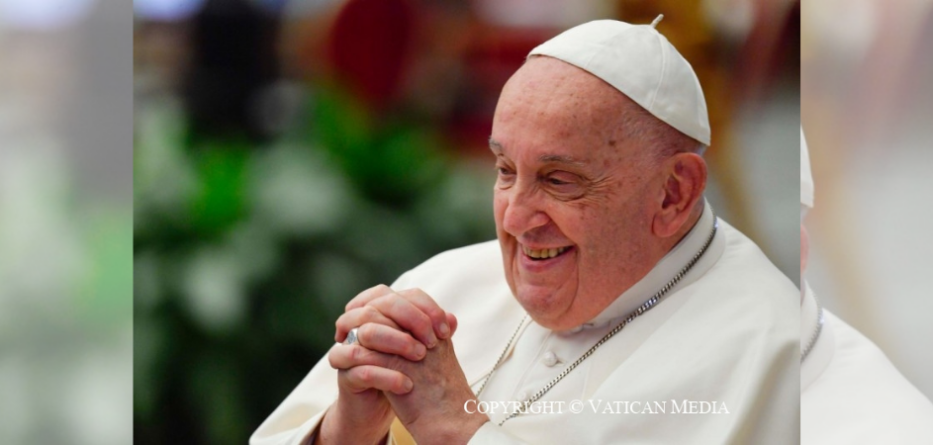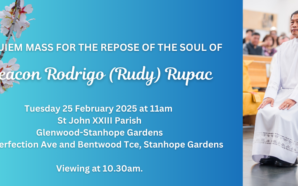Earlier this month, at the site of St. Peter’s martyrdom in Rome, participants in the second session of the synodal assembly joined Pope Francis to pray for Christian unity, offering an ecumenical prayer asking to “remove divisions between Christians so they can proclaim the Gospel together.”
The Holy Father presided over this candlelight vigil on October 11, which marked the anniversary of the opening of the Second Vatican Council in 1962. Pope Francis said he and other Synod participants wished to “express shame at the scandal of division among Christians, the scandal of our failure to bear common witness to the Lord Jesus. This synod is an opportunity to do better, to overcome the walls that still exist between us.”
Synod participants at the prayer service included 16 fraternal delegates, representing Orthodox, Anglican and Protestant Churches, as well as Rome-based representatives of the Anglican, Methodist and Reformed churches to the Holy See and other Christian ministers. As the Synod on Synodality proceeds with an ecumenical focus, Pope Francis reminds us of Vatican II’s teaching that “the closer Christians are to Christ, the closer they are to one another.”
The introductory paragraph of the Second Vatican Council’s decree on ecumenism, Unitatis Redintegratio, puts it this way: “Christ the Lord founded one Church and one Church only. However, many Christian communions present themselves to men as the true inheritors of Jesus Christ; all indeed profess to be followers of the Lord but differ in mind and go their different ways, as if Christ Himself were divided.(1) Such division openly contradicts the will of Christ, scandalizes the world, and damages the holy cause of preaching the Gospel to every creature. But the Lord of Ages wisely and patiently follows out the plan of grace on our behalf, sinners that we are. In recent times more than ever before, He has been rousing divided Christians to remorse over their divisions and to a longing for unity.”
It is indeed time for Catholics to respond to the Holy Father’s call to unity, and this need is clearly evident when we consider the continuous rejection of the Second Vatican Council by so many Catholics. I am especially dismayed at the vocal opposition toward Vatican II by those who say they have never even read the documents of the Council!
Shaun Blanchard and Stephen Bullivant have written a brilliant, comprehensive and fairly easy-to-digest work entitled Vatican II: A Very Short Introduction. In it, the authors draw attention to Lumen Gentium and its emphasis on ecclesial unity and recognition of what Christians from non-Catholic backgrounds have to offer, such as “cherishing the sacred scriptures, sincere and zealous belief in the Triune God, recognition of baptism and other sacraments, retaining the episcopate (in certain communities), celebrating the Eucharist, cultivating devotion to Mary, fostering the life of Christian prayer, desiring ecclesial unity in the Holy Spirit, and the ultimate witness of martyrdom.”
“Reform” doesn’t necessarily mandate a rupture in tradition, nor does it indicate a turn toward Protestantism. Rather, it recognizes that in order to preserve the beauty of the Body of Christ in its entirety, the faithful must constantly reform, repair, and recover damage caused by sin — including the divisions among us.
Blanchard and Bullivant note that Lumen Gentium did not only emphasize the areas we have in common, but “called for reform in how the Church’s devotional and theological life is presented.” They explain, “Vatican II’s commitment to ecumenism is borne out in the entire document and summarized in the introduction to Unitatis Redintegratio. Article 6 even acknowledged the wisdom of a principle very close to a slogan associated with the Protestant Reformation, Ecclesia semper reformanda (‘the Church always reforming’, or ‘always in need of reforming’).”
Synodality and Communion
For those stringently opposed to the call for a synodal church, I often wonder — what are they afraid of?
Is it fear of losing power or positions of privilege? Or could the reason be rooted in a vision of the Church that sees the faithful as belonging to an exclusive sectarian community that breeds an “us vs. them” mindset rather than the recognition that everyone is called to holiness and no one can be saved alone?
This came to mind as I read an article entitled “A Very Short (and Personal) Introduction to the History of Catholic Literary Studies in America” by Angela Alaimo O’Donnell. In it, the author explores the reception of Catholic literature by academic circles throughout US history. She writes that early on, “Catholic institutions had to fight their way in a secular culture to be accepted as academically reputable. The assumption that they were bastions of backward, insular, anti-modernist thought was pervasive in non-Catholic spaces throughout the first half of the twentieth century—and beyond.” This perception began to change in the second half of the century, she writes, “much of it fueled by Vatican II.” This battle, she continues, “had been hard-fought, and by the year 2000 seemed to have been won.”
O’Donnell describes the challenges she encountered when she was asked by her Jesuit university to create and teach a course on Catholic poetry that would offer credit for both an upper-level literature course and a new Catholic Studies program. Many of her colleagues thought a course on Catholic literature was not “a legitimate way to approach the study of literature” in an institution of higher education.
According to O’Donnell, there was a consensus that in the academic world, “The pursuit of Catholic Studies by an individual faculty member or scholar seemed to suggest an inordinate attachment to religion, one that could very well get in the way of one’s freedom of thought.”
As someone who has volunteered and worked as a teacher in both parochial and public schools, as well as a parent of children in both, I can attest to the relentless sense of competition between the two school systems and the enduring reputation of our local Catholic schools as insular, exclusive, and inattentive to the needs of struggling learners by means of an outdated instructional model and pedagogy.
Perhaps it is true that our Catholic education model often produces a rote, “boxed-in” mode of thought that focuses on the routine nature of the faith, rather than embracing its spirit, fostering a mindset of exclusivity that renders it nearly impossible for those raised within these institutions to consider any other approach to Catholicism later in life.
And that could very well be at the root of much of our opposition to anything “different” when it comes to ecumenical efforts, synodality, and broadening our notions of what it means to be a Church.
Recently, my husband and I attended a wonderful fundraising event for housing the disadvantaged, hosted by a woman who has spent her entire life helping those in our community. She is of an evangelical/Baptist background, and the evening was filled with delightful Gospel singing, sharing of testimonials of her work, and all-around praising the Lord.
I looked around the room at the faith-filled people raising their voices in song to the Lord, holding their hands in the air, and praising God for all He has done for them, and I thought, “Do we as Catholics really want to believe in a God that allows only one path to Him? Do I really believe in my heart that a woman who has spent her entire life praising Him and helping the less fortunate does not have a chance at salvation because she is not Catholic?”
Something deep inside told me those were mistaken notions. I love my Catholic faith, and I can never leave the Sacraments. But I can also never downplay the very significant contribution our brothers and sisters from other Christian denominations are making to building up the body of Christ on earth.
I experienced a profound sense of loss — of missing out — on such a wonderfully faithful group of people in my faith walk. I felt a pull to get to know them better. We sang together, we prayed together, and we shared our love of the same Jesus together.
Perhaps this is what Pope Francis is trying to show us — as thick-headed as we are at times. We need each other, and until we learn that collectively, we are going nowhere.
With thanks to Where Peter Is and Kristi McCabe, where this article originally appeared.








